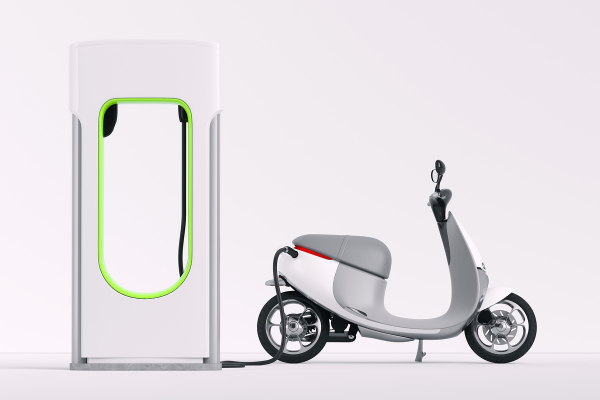How to Maximise the Battery Life of Your Electric scooter?
Mar 22, 2024 14:41

To achieve peak performance, one must optimise the battery lifespan of an EV Scooter. This comprehensive guide explores the significance of EV battery capacity and delves into charging mechanics providing actionable tips to enhance battery longevity.
Why is EV Battery Capacity Important?
Electric vehicle batteries, quantified in kilowatt-hours, typically range from 30kWh to 100kWh, influencing the vehicle's operational range. These lithium-ion batteries boast a lifespan of approximately 65,000 miles, with warranties typically extending 8 to 10 years. Tesla is actively pursuing the development of a "million-mile battery."
Continuous advancements in battery technology contribute to heightened efficiency and reduced costs. Over time, there is a gradual 10-40% degradation in battery capacity, notably affecting range and performance, especially when falling below 80%.
Manufacturers integrate safeguards against overcharging and overheating in EVs. They offer comprehensive battery warranties, ensuring unexpected repairs or failures receive coverage. Moreover, they provide robust support for EV owners throughout the entire life cycle of the battery.
Factors affecting EV battery
Electric vehicle (EV) batteries, commonly lithium-ion, experience an annual average range decline of 2.3%. Maintaining optimal battery life demands avoiding extreme temperatures, particularly during periods of parking and disconnection.
Elevated temperatures in warm climates expedite lithium-ion battery depletion, requiring the incorporation of liquid-cooled thermal management systems in EVs for enhanced durability and performance.
Noteworthy, Level 3 fast-charging stations, though swift, may result in a 10% battery degradation over eight years due to heightened heat generation. This underscores the significance of striking a balance between charging speed and preserving battery longevity.
How charging works
Electric vehicle (EV) battery packs integrate numerous Li-ion cells engaged in charge-discharge cycles, influencing overall battery longevity. With increasing cycles, the capacity to hold a charge diminishes, subsequently prolonging the recharge duration. EVs utilise slow, fast, or rapid chargers strategically placed at diverse locations to ensure effective and efficient range restoration.
Tips to maximise the battery life
To enhance the performance and durability of electric vehicles (EVs), adhering to strategic practices is crucial. Commencing with regular charging during prolonged unattended periods, especially in optimal mode, safeguards the battery from potential harm. Here are some of the tips to consider:
● Prudent consideration of manufacturers' load recommendations prevents overloading, ensuring both safety and extended lifespan.
● Discouraging overcharging, a prevalent issue, emphasises the importance of tailored charging based on commuting needs.
● Maintaining optimal tire pressure becomes paramount, as it diminishes motor energy consumption, subsequently amplifying the vehicle's range.
● Advocating a smoother driving approach by avoiding sudden acceleration alleviates strain on the battery.
● Furthermore, minimising exposure to high temperatures when parking EVs is advised, as excessive heat can detrimentally impact battery efficiency and long-term performance.
These meticulous practices collectively contribute to elevating the overall well-being and efficiency of electric scooters and vehicles.
Conclusion
By cultivating thoughtful charging practices, factoring in environmental variables, and incorporating prudent driving and maintenance strategies, one can substantially prolong the endurance of electric vehicle batteries. Embracing these measures as a priority guarantees a sustained level of performance and efficiency for both electric scooters and vehicles.







































































